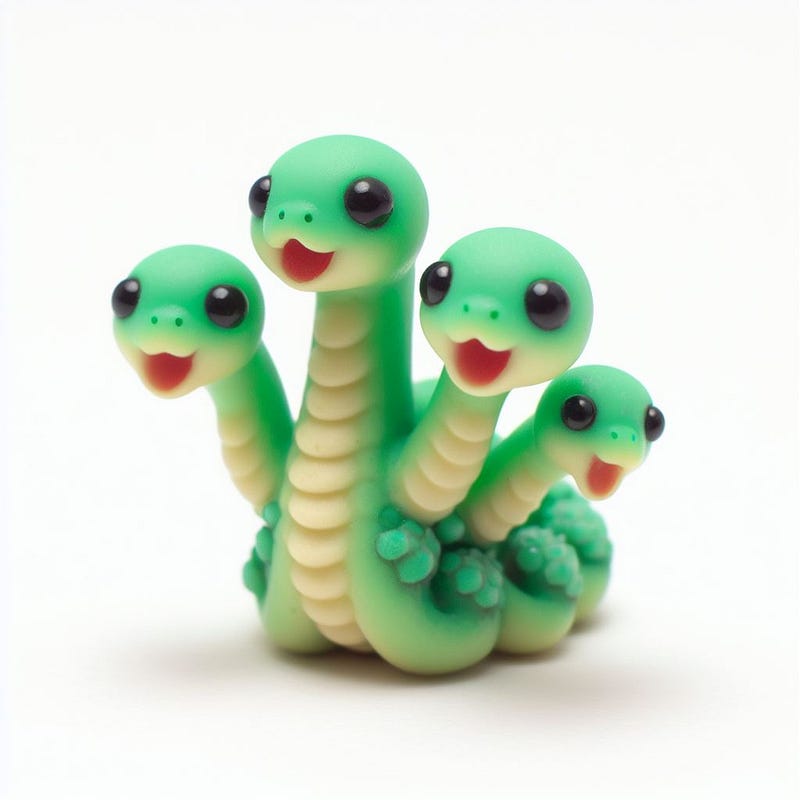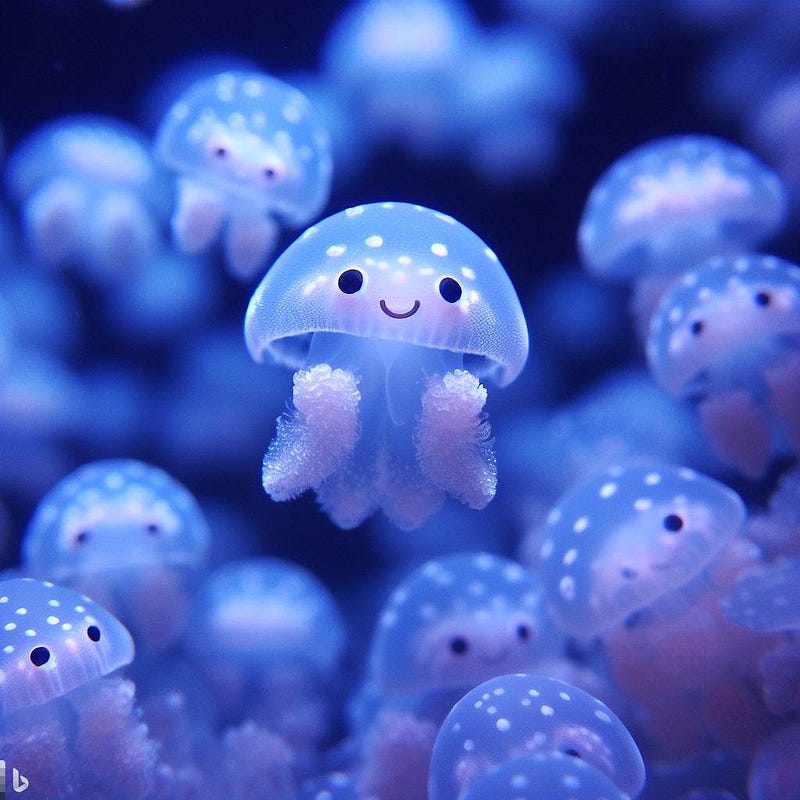Exploring the Secrets of Immortality: Nature's Timeless Wonders
Written on
Chapter 1: The Allure of Immortality
The concept of immortality has fascinated humanity for thousands of years. While humans have yet to unlock the secrets to eternal life, certain species have seemingly done just that. These biologically immortal organisms exhibit extraordinary adaptations that allow them to escape the aging process. By studying these remarkable beings, we can glean valuable insights into the evolutionary biology of aging, bringing us closer to solving the intricate scientific enigma of overcoming death.

Defining Biological Immortality
Biological immortality is characterized by an organism's ability to live indefinitely without succumbing to the effects of aging. However, this does not mean that these creatures are invulnerable; they can still fall victim to injury, disease, or resource scarcity. Their cells have developed mutations that facilitate continuous regeneration, preventing the internal degradation that leads to aging and death. These immortal species appear to have triumphed in the evolutionary struggle against senescence—the gradual decline in function associated with aging. In contrast, senescent cells accumulate damage until they can no longer divide or perform their biological roles, resulting in aging. Immortal organisms, on the other hand, maintain their youthful functionality indefinitely.
Characteristics of Immortal Species
Immortal species exhibit several defining characteristics that enable their perpetual survival:
- Highly Efficient DNA Repair Mechanisms: The cells of these organisms possess advanced systems for repairing DNA damage caused by environmental stressors and replication errors. This efficiency helps prevent harmful mutations that could lead to cellular aging.
- Enhanced Cellular Regeneration: Immortal organisms excel at cell division, continually replacing old cells with new ones. This ongoing renewal process supports their potentially limitless existence.
- Negligible Senescence: Unlike most species, immortal creatures experience minimal declines in physiological function or reproductive capability as they age. They show no noticeable signs of aging while continuing to thrive and reproduce.
- Telomere Length Maintenance: Telomeres, which protect the ends of chromosomes, typically shorten with each cell division. Immortal species manage to preserve their telomere length, allowing cells to replicate indefinitely.
- Robust Defense Against Stress: Immortal species are exceptionally resilient to stressors such as starvation, toxins, and oxygen deprivation. Their cells are finely tuned to survive under challenging conditions.
Chapter 2: The Marvels of Immortal Life
The first video titled "The Proof for Immortality" explores various organisms that exhibit traits of biological immortality, shedding light on their unique adaptations and what they reveal about the potential for extending human lifespan.
Hydra: Tiny, Immortal, and Surprisingly Humanlike
Among the most remarkable biologically immortal organisms is the hydra, a small freshwater creature related to jellyfish and corals. With a simple tubular body, hydras possess a foot that anchors them to surfaces and tentacles that extend to capture prey.

Despite their simplistic appearance, hydras have extraordinary capabilities for longevity. Key traits include:
- Limitless Regenerative Abilities: Hydras contain stem cells throughout their bodies, allowing them to continuously regenerate tissues. If cut into pieces, each fragment can develop into a new hydra.
- Absence of Senescence: Hydras show no signs of declining function or reduced reproduction over time, making them ideal subjects for research into aging mechanisms.
- Minimal Cell Death: Unlike most organisms, programmed cell death is significantly reduced in hydras, allowing their cells to persist as long as they are not damaged.
Interestingly, humans share many genes related to cell regeneration and aging with hydras. Investigating their immortality could reveal new pathways for reversing human aging.
The second video, "Why These Animals Can Never Die," delves into the unique characteristics of various immortal species, explaining how they manage to escape the fate of aging.
Tardigrades: The Indestructible Water Bears
Tardigrades, often referred to as water bears or moss piglets, are microscopic creatures known for their resilience. These segmented animals possess eight legs adorned with tiny claws.

Tardigrades achieve a form of immortality through cryptobiosis—a dormant state where all metabolic activities cease. During cryptobiosis, tardigrades can survive extreme conditions, including:
- Dehydration, where they lose nearly all body water.
- Extreme temperatures, ranging from -328°F to 304°F.
- High levels of radiation, far exceeding lethal doses for humans.
- The vacuum of space, where their resilience has been studied by NASA.
- Extended periods without food or water, only to reactivate as if no time has passed.
Their secret lies in a sugar called trehalose, which replaces water in their cells and forms a protective biological glass, preventing damage.
Jellyfish: The Pioneers of Immortality
Jellyfish, while appearing delicate, are some of the earliest multicellular organisms on Earth and exhibit remarkable survival abilities.

The immortal jellyfish, Turritopsis dohrnii, can revert from its adult medusa form to a younger polyp stage when faced with stress or injury. This remarkable ability to transform allows it to rejuvenate, potentially repeating the process indefinitely.
Most jellyfish possess unlimited cellular proliferation and mechanisms to prevent telomere shortening, enabling continuous repair and restoration without aging signs. These oceanic dwellers have maintained biological immortality for over 500 million years!
Insights from Immortal Creatures
The unique biological capabilities of these organisms offer valuable lessons in extending human lifespan:
- Improved DNA repair mechanisms could enhance the stability of the human genome.
- Activating regeneration pathways may enable tissue and organ repair.
- Understanding how to suppress senescence could lead to rejuvenation therapies.
- Maintaining telomere length and cellular replication potential could extend human lifespans.
Studying these immortal species reveals that evolution has equipped us with tools to combat aging; we just need to learn how to harness these biological processes effectively.
Ethical Considerations of Human Immortality
The enticing prospect of overcoming human aging raises significant ethical questions. Extending life through biomedical advancements could transform society and redefine human existence, but ethical considerations must be addressed:
- Overpopulation Risks: A surge in lifespans without corresponding declines in birth rates could lead to unsustainable population growth and resource depletion. However, declining fertility rates in developing nations may mitigate this concern.
- Equitable Access to Healthcare: Will immortality treatments be available to everyone, or will they exacerbate existing disparities? Ensuring universal access is vital for the ethical application of life-extending technologies.
- Potential for Authoritarian Control: The power to grant or deny extended lifespans could be misused by authoritarian regimes. Safeguards must be in place to prevent discrimination against certain groups.
- Impact on Human Motivation: Our motivations have evolved under the assumption of a finite life. How would a lack of aging influence human psychology and productivity? Some argue that ambition and creativity may diminish without a sense of urgency.
- Environmental Consequences: With humanity already approaching the planet's carrying capacity, increased longevity could exacerbate overconsumption and environmental degradation. Sustainable practices must keep pace with rising lifespans.
The path toward human immortality is fraught with complex ethical dilemmas, but the potential to alleviate suffering and expand human capabilities is equally profound. Through careful consideration, we can ethically explore the possibilities of radical life extension.
The Uncertain Future of Immortality
Will science one day unlock the key to human immortality? While the hurdles are significant, progress is being made. Revolutionary biomedical advances may eventually conquer aging, or we may need to seek alternative methods for extending consciousness digitally.

Regardless of what the future holds, the quest to challenge mortality continues. Nature demonstrates that biological immortality is achievable. If simple organisms can attain it, perhaps humanity can, too.
Though there are no certainties, we may shift the odds in our favor through scientific exploration. Our drive for understanding propels us onward. Whether we achieve immortality or not, our connections enrich our lives, providing meaning that transcends our limited time here.